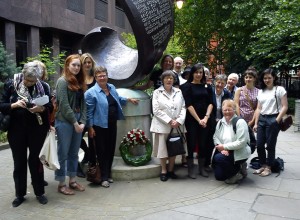First published on Blogcritics
The some 200 convict women who sailed to Sydney Cove on the Lady Julian might be considered the foremothers of the Australian nation – sent not only because Britain’s jails in the 1780s were packed beyond sense with women left without economic options by the return of tens of thousands of servicemen from the American War of Independent, and forced on the street by Prime Minister William Pitt’s tax on maidservants over the age of 16, but also because the penal colony’s founding governor had asked for a balancing of the sexes after the hugely male-dominated First Fleet.
Yet we don’t even know now exactly how many women were on the ship, or all of their names, but thanks for the classic work of popular, but very well-done historical reporting in The Floating Brothel we know some of their stories, and even for those whose identities are lost, have a sense of what their lives had been like, and how they might have ended up sentenced to seven years (or life) in Botany Bay.
Rees is a sympathetic but realistic guide to the lives of these women, so far removed from most of ours. They were mostly young, had spent much of their lives with no certainty of where their next meal was coming from, had often been brutalised into violence and thieving in a world where this was normal behaviour, and when placed in a situation where a sailor might choose them as a “wife” for many months of a voyage into the unknown would have little choice but to accept, or indeed to compete for the “privilege” of the extra protection and rations that it might offer them.
She’s also done a prodigious amount of research on the lives of the more exceptional women – almost by definition the ones’ whose lives are likely to be better documented, from “the most flamboyant” among them, Elizabeth Barnsley, a shoplifter who “stole from the best addresses”, and had been caught “lifting £6 worth of muslin from Hoggkinson, Warrener and Percival of Bond Street, to the pathetic 19-year-old Sarah Dorset, who had eloped from the home of her good family, but “had not been with the villain six weeks” before he abandoned her and “she was forced by want upon the streets”.
For the account of the voyage, Rees is heavily dependent on the memoirs, dictated 30 years later in Edinburgh, by the ship’s steward and cooper Jon Nicol, a curiously modern if rather pathetic figure, who fell in love with the convict Sarah Whitelam, and spent much of his life trying to get back to Sydney Cove, where they’d been forced to part when the Lady Julian sailed for Canton, not knowing that Sarah, no doubt very sensibly, had married another man the day he sailed out of Sydney Cove, which perhaps shows a lot about how most of the women regarded the liaisons they were forced into on the voyage and after.
read more »



 About
About